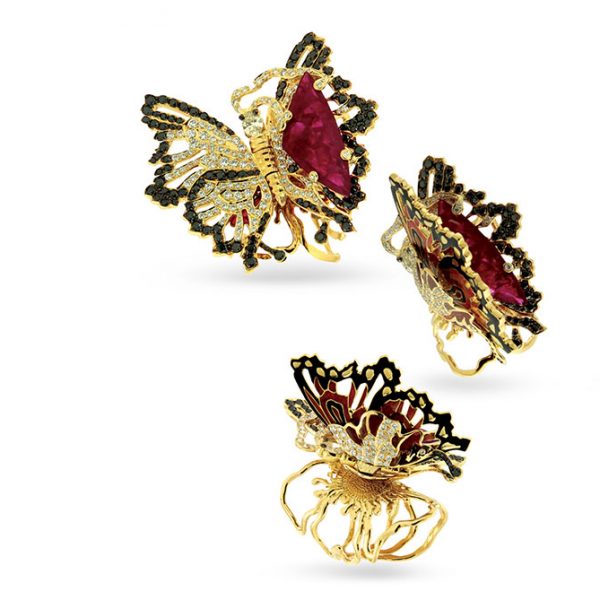
At July’s IIJS, the government’s tough new demonetization scheme was good for business
In a surprise move last November, India’s prime minister, Narendra Modi, revoked 500- and 1,000-rupee bank notes in an effort to bring the country’s black market to its knees. The government also imposed a goods and services tax, which took effect in June, to replace a slew of indirect tax laws. Traditionally, Indians made their jewelry purchases in cash. Now, however, consumers are being forced to make every purchase transparent.
Initially, jewelry business owners worried that these changes would bring fear and apprehension to buyers headed to the 34th annual India International Jewellery Show (IIJS), held July 27–31 in Mumbai. But exactly the opposite occurred. “People thought that it would backfire, but it hasn’t,” says Swaroop Biswas, marketing manager of Kiran Gems, one of the world’s largest exporters of diamonds.
In years past, buyers would hit the show’s gold section first before heading to the diamond section to place their orders. This year, diamond exhibitors were busy from day one, with many passersby reporting they overheard negotiations and buying. “Not a single person has complained about the last two events,” says Biswas.
Praveenshankar Pandya, chairman of the Gem & Jewellery Export Promotion Council (GJEPC), the show’s organizer, agreed, adding that foot traffic was much higher this year than it was last year. “My exhibitors and customers are quite happy,” he says.
Meanwhile, the GJEPC and IIJS have formed an International Diamond Monitoring Committee Initiative composed of 12 countries in order to crack down on undisclosed synthetic diamonds. GJEPC is subsidizing the cost of machines for India’s diamond purveyors to help ferret out non-natural stones. “Synthetic will have to go its own way,” says Pandya. “It cannot go on the back of the natural diamonds market, which has taken 40 to 50 years to reach what it is today.”
Elsewhere at the show, India’s craftsmanship was on full display, from ancient techniques found in traditional polki jewelry to modern 3-D printing and exquisite enamelwork. The GJEPC is extensively lobbying the industry to support artisanal makers and foresees a whopping 45 percent increase in handcrafted jewelry exports within five years, soaring from $43 billion this year to $60 billion in 2022. Just imagine all those rupees.
Spin the Twin ring with 7.56 ct. triangular ruby, 3.74 cts. t.w. brilliant-cut diamonds, and champlevé-style enamel in 18k gold; price on request; Masterstrokes by Jewels Emporium; 800-103-1841; jewelsemporium.com